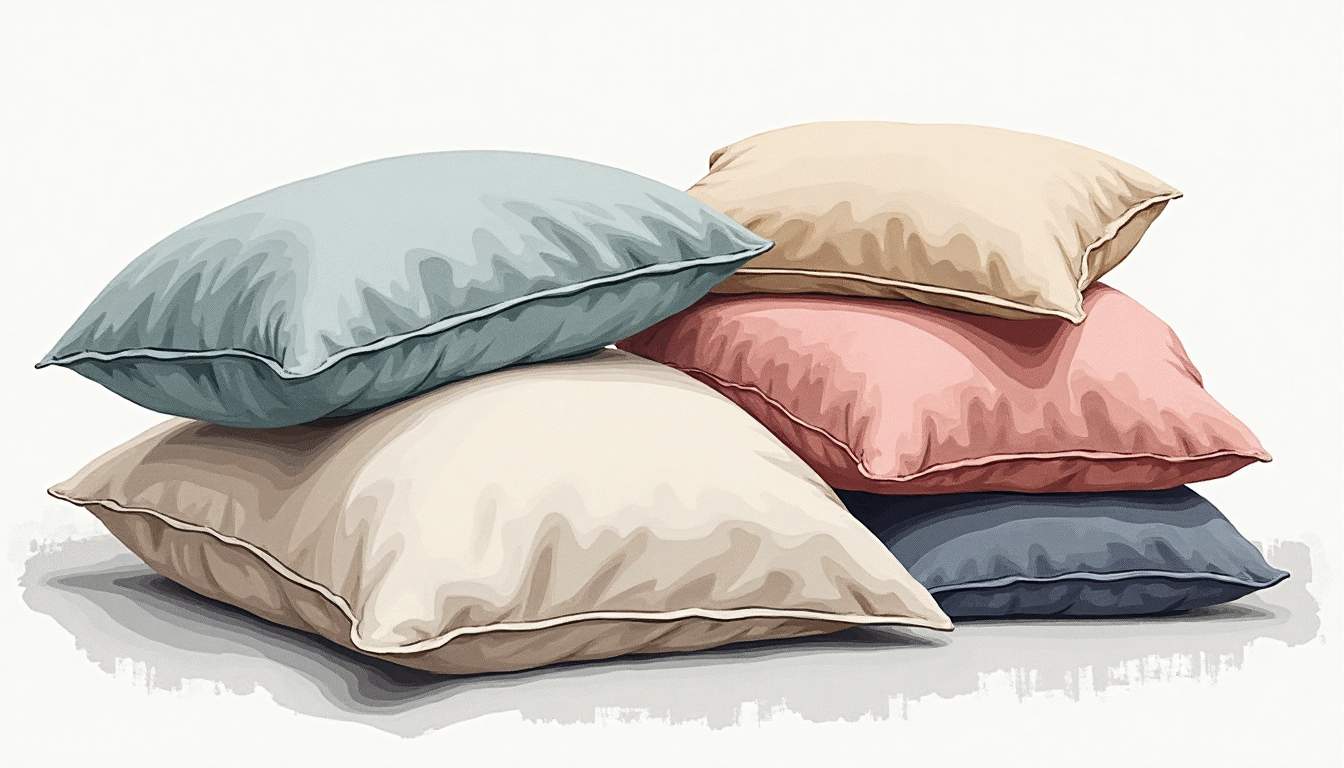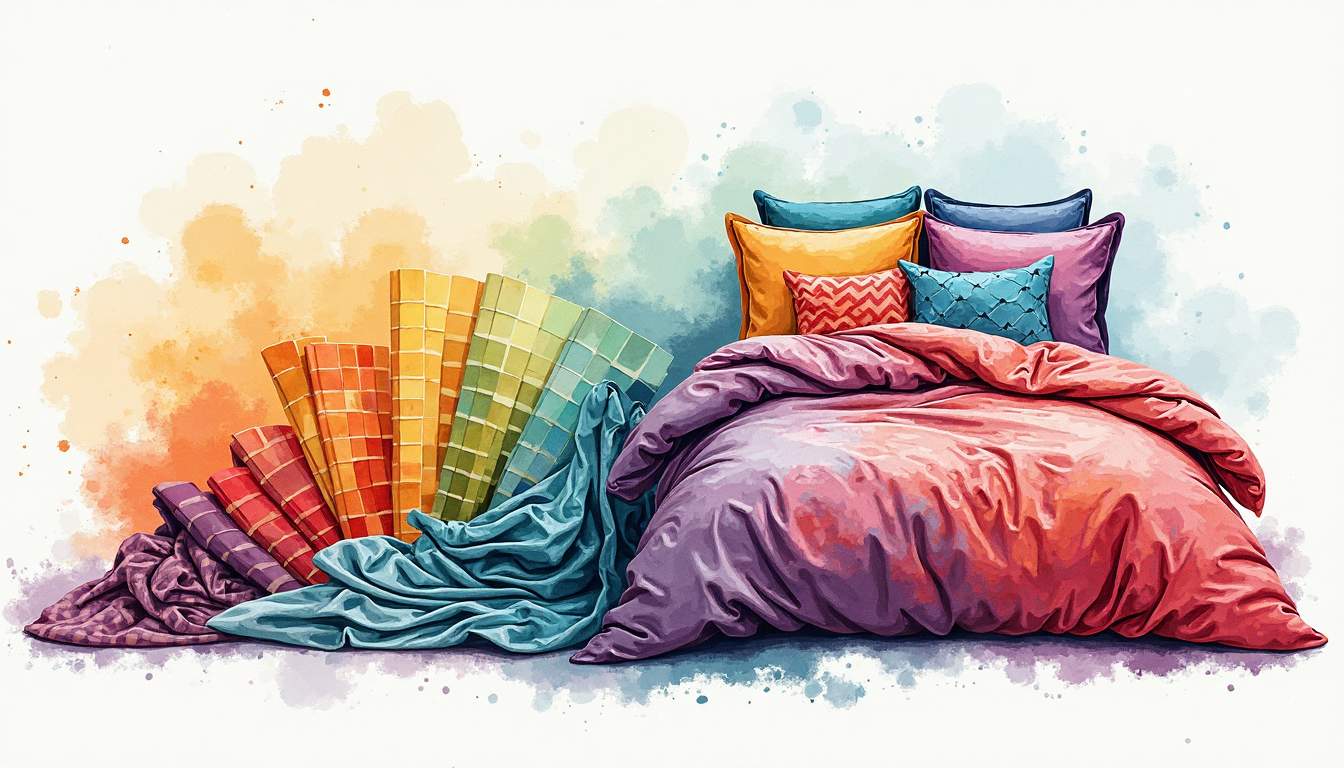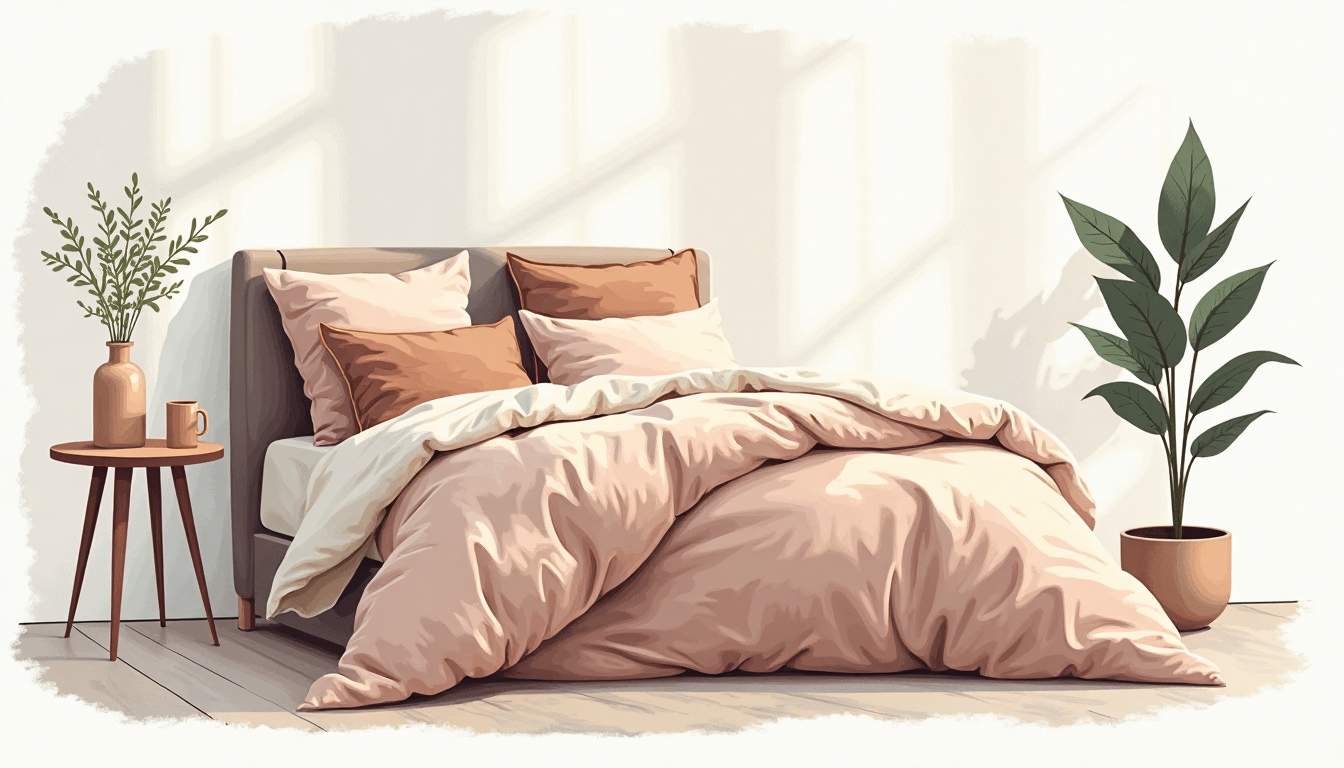
Choosing the right fabric for duvet cover sets can significantly enhance the comfort and aesthetic of your bedroom. With a plethora of options available, it’s essential to understand the characteristics of different fabrics and how they can impact your sleep experience. This guide will walk you through the various fabric types, their benefits, and how to select the perfect one for your needs.
Understanding Fabric Types
Before diving into the specifics of duvet covers, it’s crucial to familiarize yourself with the most common fabric types used in bedding. Each fabric has unique properties that can affect warmth, breathability, and overall feel. The choice of fabric can significantly influence not just the aesthetic of your bedroom but also your comfort and sleep quality, making it an essential aspect to consider when selecting a duvet cover.
Cotton
Cotton is one of the most popular choices for duvet covers due to its natural fibers and versatility. It is soft, breathable, and hypoallergenic, making it an excellent option for those with sensitive skin. Cotton duvet covers come in various weaves, including percale and sateen, each offering a different texture and finish. The versatility of cotton allows it to be dyed in a myriad of colors, enabling you to easily match your bedding with your room's decor.
Percale cotton has a crisp, cool feel, while sateen cotton is softer and has a slight sheen. Additionally, cotton is easy to care for and can withstand frequent washing, retaining its quality over time. Many manufacturers also offer organic cotton options, which are grown without harmful pesticides and chemicals, appealing to environmentally conscious consumers. This ensures that not only do you sleep comfortably, but you also contribute to a more sustainable planet. To explore premium cotton bedding options, visit Rooh London website and discover their eco-friendly collection.
Linen
Linen is another natural fabric that is gaining popularity for duvet covers. Known for its durability and breathability, linen provides a relaxed, textured look that can add a touch of elegance to any bedroom. It’s particularly well-suited for warmer climates, as it wicks moisture away from the body, keeping you cool during hot nights. The natural fibers of linen also have insulating properties, making it a suitable choice for all seasons, as it can help regulate temperature effectively.
However, linen can be prone to wrinkling, which may not appeal to everyone. If you appreciate a more casual, lived-in aesthetic, linen could be the perfect choice for your duvet cover. Additionally, linen becomes softer and more comfortable with each wash, enhancing its appeal over time. The unique texture of linen can also add depth to your bedding ensemble, allowing you to create a layered look with other fabrics and textures.
Microfiber
For those seeking a budget-friendly option, microfiber is a synthetic fabric that mimics the softness of natural fibers. It is lightweight, durable, and resistant to wrinkles, making it an excellent choice for easy maintenance. Microfiber duvet covers are available in various colors and patterns, allowing for a wide range of design options. This fabric is particularly popular among families with children or pets, as it can withstand spills and stains more easily than some natural fibers.
While microfiber is soft and cozy, it may not be as breathable as natural fabrics, which can be a consideration for those who tend to sleep hot. However, advancements in microfiber technology have led to the development of more breathable options that still retain the fabric's signature softness. Furthermore, microfiber is often more affordable than its natural counterparts, making it an attractive option for those looking to refresh their bedding without breaking the bank. With its wide variety of styles, microfiber duvet covers can effortlessly transform the look of your bedroom while providing comfort and convenience.
Factors to Consider When Choosing Fabric
When selecting a fabric for duvet cover sets, several factors come into play. Understanding these factors can help you make an informed decision that aligns with your preferences and lifestyle.

Climate and Seasonality
The climate in which you live plays a significant role in determining the best fabric for your duvet cover. In warmer climates, breathable fabrics like cotton and linen are ideal, as they allow for airflow and moisture-wicking. Conversely, in colder regions, heavier fabrics such as flannel or thicker cotton weaves can provide extra warmth and comfort.
Additionally, consider the seasonality of your duvet cover. Some people prefer lighter fabrics for summer and switch to heavier materials during winter. Having a versatile duvet cover set that can adapt to seasonal changes can enhance your sleeping experience year-round.
Allergies and Sensitivities
For individuals with allergies or sensitivities, choosing hypoallergenic fabrics is crucial. Cotton and linen are naturally hypoallergenic, making them safer choices for those prone to allergies. On the other hand, synthetic fabrics like microfiber may trap dust mites and allergens, which could exacerbate respiratory issues.
It’s also worth considering whether the fabric has been treated with any chemicals or dyes, as these can sometimes irritate sensitive skin. Opting for organic or untreated fabrics can provide peace of mind.
Maintenance and Care
The ease of maintenance is another critical factor when selecting a duvet cover fabric. Some materials, such as cotton and microfiber, are machine washable and can withstand frequent laundering without losing their quality. Linen, while durable, may require more careful handling to maintain its appearance.
Consider how much time and effort you are willing to invest in caring for your duvet cover. If you prefer low-maintenance options, fabrics that are wrinkle-resistant and easy to wash will be beneficial.
Popular Fabric Choices for Duvet Covers
With an understanding of fabric types and considerations, let’s explore some of the most popular fabric choices for duvet covers and their unique attributes.
Flannel
Flannel is a soft, warm fabric that is perfect for creating a cozy atmosphere in the bedroom. Typically made from cotton or a cotton blend, flannel duvet covers are ideal for colder months, providing warmth and comfort. The brushed texture of flannel adds an inviting feel, making it a favorite for those who love snuggling up in bed.
However, flannel may not be suitable for warmer climates, as it can retain heat. If you live in a region with significant seasonal temperature fluctuations, consider having a flannel duvet cover for winter and a lighter option for summer.
Silk
Silk duvet covers exude luxury and elegance, making them a sought-after choice for those looking to elevate their bedroom decor. The smooth, soft texture of silk feels incredible against the skin and can help regulate body temperature, keeping you comfortable throughout the night.
However, silk requires special care, as it can be delicate and may not be machine washable. If you choose silk, be prepared to invest time in its maintenance to ensure its longevity.
Jersey Knit
Jersey knit fabric, often associated with t-shirts, is becoming increasingly popular for duvet covers due to its softness and stretch. This fabric provides a casual, relaxed look and feels incredibly comfortable against the skin. Jersey knit duvet covers are often machine washable and easy to care for, making them a practical choice for everyday use.
While jersey knit offers a cozy feel, it may not provide the same level of breathability as other natural fabrics, so consider your sleeping habits when selecting this option.
Color and Pattern Considerations
The fabric of your duvet cover is not only about texture but also about color and pattern. The right design can transform the look of your bedroom and reflect your personal style.

Choosing the Right Color
When selecting a color for your duvet cover, consider the overall color scheme of your bedroom. Neutral colors like white, beige, or gray can create a calming atmosphere, while bold colors can add a pop of personality and vibrancy. Additionally, consider the psychological effects of color; for instance, blues and greens are often associated with tranquility, while reds and yellows can energize a space.
It’s also worth considering how the color of your duvet cover will coordinate with other bedding elements, such as pillows and throws. A cohesive color palette can create a harmonious and inviting environment.
Patterns and Textures
Patterns can add visual interest to your bedding, allowing for creative expression in your bedroom decor. Floral, geometric, or abstract patterns can enhance the overall aesthetic, while textured fabrics can create depth and dimension. When choosing patterns, consider the size of your bedroom; larger patterns can overwhelm a small space, while smaller patterns can add charm without being overpowering.
Mixing and matching patterns is also an option, but it requires a careful approach to ensure that the designs complement each other. Consider using a patterned duvet cover with solid-colored pillows or vice versa to achieve a balanced look.
Budget Considerations
When it comes to purchasing duvet cover sets, budget is an important aspect to consider. The price of duvet covers can vary significantly based on the fabric type, brand, and design.
Finding Quality on a Budget
While it’s tempting to opt for the cheapest option available, investing in quality bedding can pay off in the long run. Higher-quality fabrics tend to last longer, maintain their appearance, and provide better comfort. Look for sales, discounts, or outlet stores that offer quality duvet covers at a reduced price.
Additionally, consider purchasing a duvet cover set that includes matching pillowcases and other bedding elements. Bundling can often result in savings compared to buying each piece separately.
Long-Term Investment
Think of your duvet cover as a long-term investment in your comfort and style. Spending a bit more on a high-quality fabric can enhance your sleep experience and contribute to a more aesthetically pleasing bedroom. It’s worth taking the time to research and find a duvet cover that meets your needs without compromising on quality.
Conclusion
Choosing the right fabric for duvet cover sets involves careful consideration of various factors, including fabric types, climate, allergies, and personal preferences. By understanding the characteristics of different fabrics and how they align with your lifestyle, you can make an informed decision that enhances your sleeping experience.

Whether you opt for the breathability of cotton, the luxury of silk, or the warmth of flannel, the right duvet cover can transform your bedroom into a sanctuary of comfort and style. Remember to consider color, patterns, and budget as you explore your options, ensuring that your duvet cover not only feels great but also complements your decor.
With the right fabric in place, you can enjoy restful nights and beautiful mornings, making your bedroom a true reflection of your personal style and comfort needs.